The new Samsung Galaxy S20 Ultra is a phone like no other we’ve seen come out of the South Korean factories so far. Loaded to the teeth with the latest technologies developed by the company, its ultimate goal is to become the top phone. But do you have what it takes to get there?
According to the RAE, “Ultra-” is the prefix that we would use to refer to something that has been raised to an extreme degree. And the truth is that Samsung’s decision to give this surname to the new jewel in the crown of its telephone catalog makes much more sense when referring to this definition.
It is precisely this ambitious goal mentioned above that makes the Samsung Galaxy S20 Ultra disappointing. Because by now, we were used to the slight price increases of each new generation of the Galaxy S series. But what we might not be prepared for was to welcome a 1,359-euro phone that continues to carry some classic drawbacks and whose most important developments may even turn against it.
We recommend: The best Samsung phones you can buy right now
Samsung Galaxy S20 Ultra, features and specifications
| Samsung Galaxy S20 Ultra | |
| specs | |
| Dimensions | 167 x 76 x 8,8 mm 221 grams |
| Screen | 6.9-inch Infinity-O Dynamic AMOLED 120 Hz refresh rate |
| Resolution | WQHD+ (3,200 x 1,440 pixels) 511 ppi |
| Processor | Samsung Exynos 990 5G |
| RAM | 12/16 GB LPDDR5 |
| Operating system | One UI 2.0 based on Android 10 |
| Storage | 128/512 GB UFS 3.0 expandable by micro SD up to 1 TB |
| Photography | Rear : 108 MP (main) ƒ / 1.8, OIS. 12 MP (wide angle) ƒ / 2.2. 48 MP (telephoto) ƒ / 3.5, 10X hybrid 4X optical zoom, 100X digital, OIS. DepthVision Sensor. Frontal: 40 MP /2.2 |
| Battery | 5,000 mAh with 45W fast charge (25W charger included) Wireless charging Reverse wireless charging Wireless PowerShare |
| Others | IP68 protection, 5G, Dolby Atmos Stereo Speaker by AKG, ultrasonic on-screen fingerprint reader |
| Colors | Cosmic Gray, Cosmic Black |
| Price | From 1,359 euros |
The best of the Samsung Galaxy S20 Ultra
Your screen
It’s hard not to fall in love with the gigantic 6.9-inch SuperAMOLED display on the Samsung Galaxy S20 Ultra. It was already difficult not to do it from the Galaxy Note10 + or the Galaxy S10 + a few months before.
I’m trying to say that, once again, Samsung proves why it is the queen of AMOLED panels thanks to an excellent screen that surpasses that of any other mobile that we have ever tried in basically every aspect imaginable. Even after using a for months Pixel 4 XL, chosen as one of the phones with the best panel on the market by Display Mate, the superiority of the S20 Ultra’s screen is evident from the moment you turn it on for the first time.
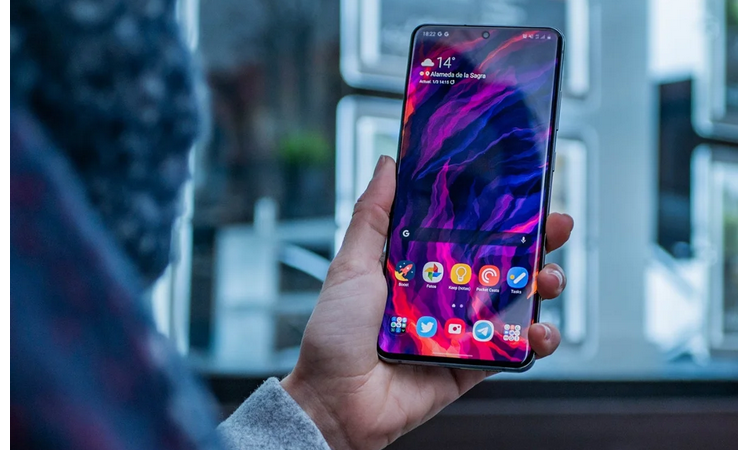
But beyond the excellent viewing angles, a level exaggerated maximum brightness or a faithful color reproduction – as long as the “Natural” color mode is activated -, the screen of the Samsung Galaxy S20 Ultra stands out for an addition that no other mobile of the company had included to date: a refresh rate of 120Hz.
The S20 Ultra’s screen outperforms any other mobile we’ve ever tested in basically every aspect imaginable.
By doubling the frequency with which the content on the screen is updated, the animations and movements happen with extreme smoothness, thus improving the experience when browsing the Internet, scrolling, playing compatible titles, or simply opening and closing menus just because, to enjoy the extreme fluidity that 120Hz provides.
Based on the content that appears on the screen. But Samsung, unlike other firms, has opted for a policy that forces the user to choose between extreme fluidity or maximum resolution. That is why, although the terminal screen has a native resolution of 3,200 x 1,440 pixels, if you want to use the panel at its maximum refresh rate, you will have to settle for a solution limited to 2,400 x 1,080 pixels. In addition, by default, the refresh rate of the panel is set to 60 Hz to improve autonomy –in theory, the improvement is 10% – and the device software cannot change the refresh rate of the panel dynamically.
Be that as it may, I must admit that activating 120Hz was one of the first things I did as I soon started the device, and at no time have I felt the need to return to 60Hz to enjoy a higher resolution or a slightly higher autonomy.
Regardless of the characteristics of the panel itself, Samsung seems to have heard our prayers and has finally decided to get rid of the pronounced “edge” curves that have been present on the screens of this series for years. Instead, the firm is now betting on much shallower angles that help make using the device more comfortable and, incidentally, avoid the appearance of the classic phenomenon of “ghost touches,” with which many already seemed to have gotten used to living.
Performance and overall experience
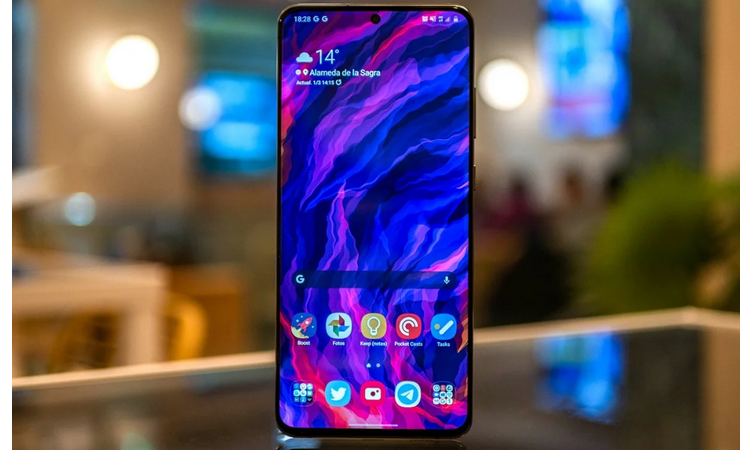
Beyond the exceptional display, other elements in the S20 Ultra formula make the experience of using the phone a true delight. Perhaps the most important is its new processor, the Exynos 990 5G manufactured in 7 nanometers and made up of 8 cores, accompanied by 12 GB of LPDDR5 RAM in the version we have tested, and an internal storage UFS 3.0 of 128 GB expandable by micro SD.
The coalition of all these components, coupled with much more polished software than in this series’s previous editions, results in excellent performance under all circumstances. Of course, that shouldn’t surprise anyone considering the price of the phone.
And speaking of the software, I consider it necessary to stop and comment on this section. Because for the first time since I have been analyzing the company’s terminals, I have decided not to include the software as one of the negative points of the device. Not because One UI has changed overnight and has become the perfect customization layer, but because at least now there is no more than it adds up, and its operation, at least on mobile of this category, already it is at the level of other “cleaner” Android-based operating systems.
Among the most exciting novelties that the Android 10-based version of One UI introduces is the entirely gestural navigation, inherited directly from the latest version of the operating system developed by Google. Using this navigation system – which is not activated by default – completely changes the experience when using the device and makes moving between applications or menus an even smoother and more intuitive process. Of course, if you intend to use it, you will have to settle for the original Samsung launcher since gestural navigation is still not compatible with third-party launchers in One UI 2.1.
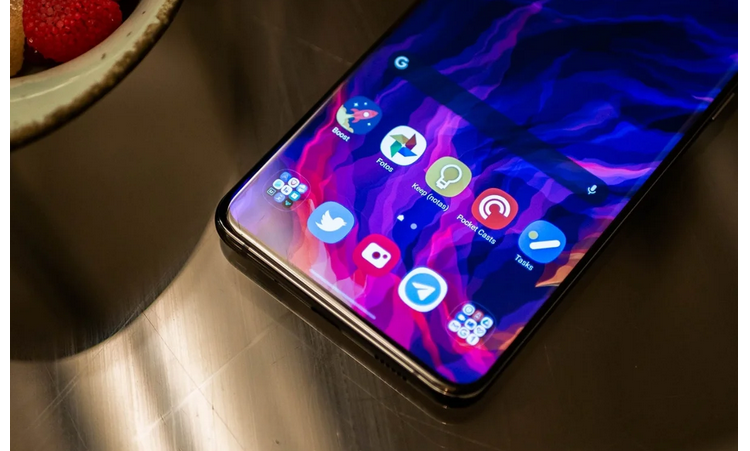
Apart from that, there is no shortage of thousands of different functions with which Samsung endows its personalization layer. Some of them are especially useful, and others that for most will be irrelevant – ahem, Bixby and Samsung Daily. We have an extremely convenient “one-hand mode” on a mobile of this size, built-in screen recorder, “edge actions” –despite the elimination of the lateral curves of the screen–, a fantastic integration with Windows that will result especially useful to owners of a computer with Microsoft’s operating system, and a host of other features and tools that will keep you glued to your mobile for hours if you intend to familiarize yourself with all of them.
Another exciting function integrated into One UI 2.1 with which Samsung allows you to get even more out of the 12 or 16 GB of RAM phones is the possibility of keeping applications open to speed up their opening and prevent the operating system from closing them automatically. When they are in the background. The maximum limit of apps that can be set is 3 or 5, depending on the memory configuration that has been chosen.
Having said all this, I consider it simply inadmissible that, in the middle of 2020, Samsung continues without changing its update policy. That mobile of 1,359 euros only has secured two significant updates to the operating system.
Samsung has also decided to raise the bar – or at least try – for autonomy. Because unlike aspects such as photography, when we talk batteries, higher numbers tend to translate into better results. And the 5,000 mAh battery in the Samsung Galaxy S20 Ultra is a good example.
Considering that since I received the device, I have kept the screen refresh rate at 120Hz, the S20 Ultra has allowed me to reach the day of use with around 5:30 or 6 hours of screen on seems to be a good result. And I do not doubt that using the device out of the box – that is, with the panel resolution “capped” at 1080p and the refresh rate at 60Hz – would offer much greater autonomy. But, at least in my opinion, it doesn’t make up for it.
Unlike other sections, when talking about battery, higher numbers almost always translate into better results.
And it makes up even less considering that the phone can charge at high speed using the 25W charger included in the box, and there is also support for wireless charging. Of course, I also think that the 45W charger that Samsung sells separately for 50 euros would have added some points to the brand’s objective of trying to justify the high price of the phone.
The worst of the Samsung Galaxy S20 Ultra
His design
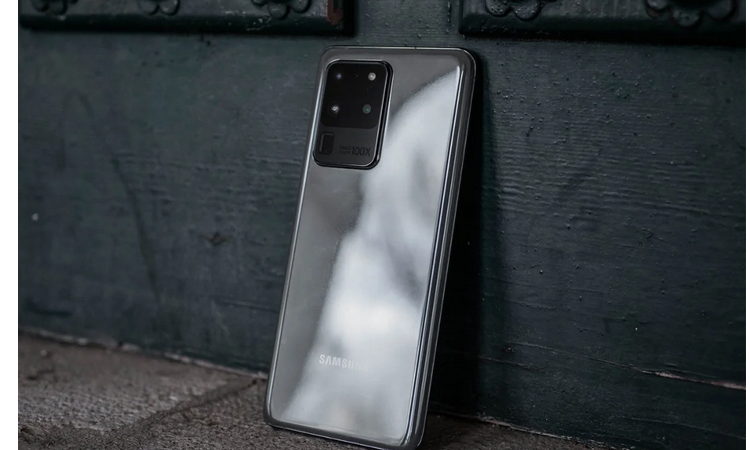
At what point did we decide that cell phones weighing around a quarter of a kilo were acceptable? At almost 17 centimeters tall and weighing 220 grams, the Samsung Galaxy S20 Ultra is one of the giant phones that has ever passed through our hands. More than any other mobile in the Galaxy S or Note series, even more so than that gigantic Samsung Galaxy Mega launched in 2013, whose dimensions reminded us more of a tablet than a mobile phone.
Using the Samsung Galaxy S20 Ultra without a case is nothing short of a risky sport.
It is also more significant than the iPhone 11 Pro Max. Although the Korean model is slightly lighter, the weight of the gigantic photographic module on the back means that its importance is not entirely well balanced and that you use it for periods. Relatively long turns into quite an odyssey.
In other words, using a Samsung Galaxy S20 Ultra without a case is a little less than a risky sport, And not only because of its weight and size; Its shiny glass and aluminum construction makes it a particularly slippery and fragile mobile. At least Samsung has decided to include a transparent gift case next to the terminal.
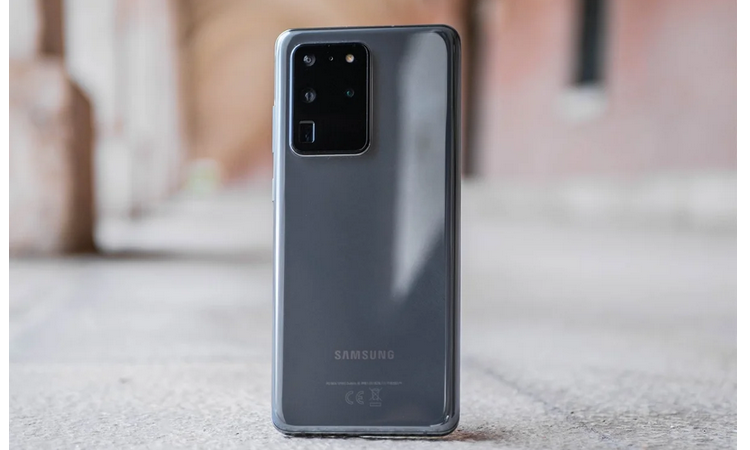
However, more factors make the design of the S20 Ultra not precisely one of its strengths. As usual, Samsung offers a well-built phone with well-finished edges and curves that give it an aesthetic in keeping with the times. Beyond that, its physical appearance is nothing special except for the photography system that occupies a good part of the surface of the back and protrudes by several millimeters.
And that, in what should be the most leading and representative mobile of the company – with the permission of the folding ones – is a problem. Even more so when other manufacturers have already begun to bet on more durable or exclusive manufacturing materials than aluminum and glass that shape this Samsung Galaxy S20 Ultra, such as stainless steel or ceramic, and primarily because Samsung has raised both the level in its lower lines that, currently, there are hardly any notable differences between the design of models such as the Galaxy A51 or the Galaxy S10 Lite and that of this Samsung Galaxy S20 Ultra.
Because the design of the most special Samsung mobile does not contribute anything new that we have not already seen in other mobile phones of the brand, even those that cost half the money than this terminal.
This is how you take photos and record the Samsung Galaxy S20 Ultra.
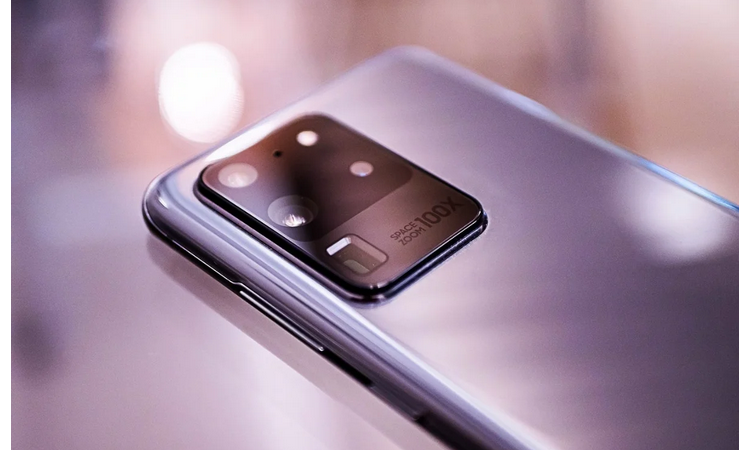
At this point, no one should doubt that the photographic section of this mobile is the central aspect that differentiates it from any other mobile and that Samsung is going to try to squeeze the most to convince you to pay the 1,359 euros that the costs Samsung Galaxy S20 Ultra Instead of the 909 or 1,009 euros of the Samsung Galaxy S20 and S20 + it is worth it. And take a look at their numbers to realize it.
The Samsung Galaxy S20 Ultra 5G has six different cameras, five of them located in the gigantic module on the back, and one on the front, inside the small hole with which Samsung cuts out the OLED panel of the terminal…
Starting with the rear system, we see a 108-megapixel primary camera with resolution f / 1.8 that, by default, captures 12-megapixel images based on a pixel grouping technique that Samsung calls nonbinding. However, Samsung offers the possibility of capturing images at the maximum resolution that this sensor can give through a hidden option in the photography application.
Also on the scene is a “telephoto” 48-megapixel sensor f / 3.5 with four optical zooms, a “super wide-angle” 12-megapixel f / 2.2, and a “DepthVision” camera equipped with a sensor ToF, designed to capture information. Deep.
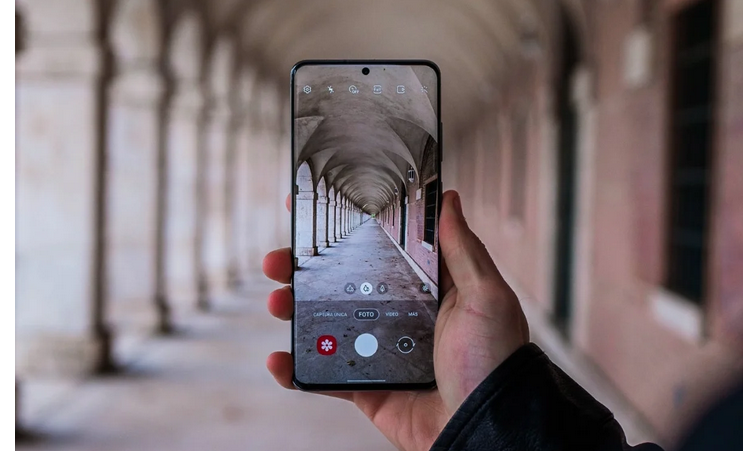
The most important of the primary sensors is undoubtedly the 108 megapixel one. Given its large size – three times larger than that of a Galaxy S10 – it can capture much more light than any other mobile with a smaller sensor. And if you want even more detail, activate the “108 MP mode” to generate captures with much more detail – at least that’s the theory – in exchange, yes, for files whose weight shoots up to exceed 25MB in certain situations.
An exciting novelty that is introduced in this generation is the Single Capture function. The device will capture different images and videos of the same scene using the various modes integrated into the camera app. Although the process will take a little longer than taking a “normal” photo, it is a curious solution that avoids deciding which image mode to use so that the software is in charge of doing the work.
The capabilities of the device when it comes to zooming cannot be overlooked either. After all, Samsung has stamped the words “SPACE ZOOM 100X” on the module that houses the different sensors that make up this configuration.
Unlike the Samsung Galaxy S20 and S20 +, the Samsung Galaxy S20 Ultra does have an optical zoom. It is a “folded lens” located at the bottom of the photography module, whose operation resembles a periscope. On Samsung’s official website, it is explained in more detail how this sensor works when capturing an image:
“Light entering from the back of the phone is redirected by a prism towards the lens, refracting to the right at a 90-degree angle through a series of stacked optical elements that increase the focal length, in the same way in that a periscope works. “_
This technology added to the capabilities of the 48-megapixel sensor supported by the pixel grouping technique allows the camera to Samsung Galaxy S20 Ultra to capture images with 4x optical and digital zoom of up to 100.
But the parade of crazy figures continues: the Samsung Galaxy S20 Ultra is one of the first mobile phones on the market capable of capturing video at 8K resolution, although this mode is limited to a rate of 24 FPS. In addition, the selfie has a resolution of 40 megapixels. As the primary sensor, it is possible to take pictures at the highest possible solution if you want to obtain the full detail that it can capture.
Now, how do all these numbers translate into practice? If you’ve read the title of this review, I’m afraid you can figure out where the shots are going.
Behavior in the daytime, portrait mode, and at night with the Samsung Galaxy S20 Ultra
Let’s start at the beginning: the phone’s primary camera allows you to capture almost outstanding images in most situations in which the light accompanies. The high resolution and the larger size translate into bright photos with a high level of detail – although not much more than those taken with mobiles like the Pixel 4, which leads us to question the need for such a large and expensive sensor -.
However, as has happened in each model of the Galaxy series that we have been able to test so far, the software in charge of processing the photographs comes into play again to give the captures that look so characteristic of the company, which stands out for its smoothing excessive, especially when a is detected human face in the scene, and by indiscriminately “lifting” the shadows, thus eliminating much of the contrast in the image and adding noise – less than in previous years, yes – unnecessary. Interestingly, these two problems largely disappear when using the camera’s “Pro mode.”
The primary camera also does not fail in night scenes. Unless we are in almost total darkness, there will be virtually no need to enable the “Night Mode” included in the camera app, which camera. , although practical, it is still not at the level of the fit in the latest phones from Apple and Google, especially when it comes to calculating the white balance – it usually tends to throw excessively towards the warmer side.
If you want, you can also take 108-megapixel resolution photos using the phone’s primary camera. In theory, this mode is intended to capture more detail in each scene so that later images can be cropped without losing quality. The reality is that in most situations, it is not worth having to activate this option every time you want to use it, mainly because, in the default mode, it is already capable of capturing enough detail not to miss one—function of this type.
That said, it is worth mentioning that the process of capturing images at this resolution is surprisingly fast, considering the computational load involved in taking and processing a photograph of this size—one of the advantages of having an unreasonable amount of RAM.
Another detail of the primary camera that I think is worth highlighting is the shallower depth of field that the sensor generates naturally, and that on certain occasions makes the portrait mode or “dynamic blur” unnecessary since, in a way, By default, images will already have a relatively pleasant and natural background blur. Of course, this can also be a problem as, at times, the edges of the foreground subject can become out of focus or show artifacts due to the shallow depth of field of the sensor.
As for the zoom, I am terrified that today, the Samsung Galaxy S20 Ultra is the mobile with the best zoom on the market within the range of 4 and 10 times. Beyond there, quality losses are very evident up to 30x. The 100x zoom that Samsung boasts so much only allows images to be highly blurry and lacking in detail, as impressive as it may be to magnify up to that distance using a mobile.
The sensation with the “ultra-wide-angle” sensor is different from what is perceived with the other sensors: basically, there are no drawbacks. Despite its lower resolution, it is still capable of capturing a good level of detail in scenes and generating colors that do not clash with those obtained using the other cameras on the phone. I would dare to say that, to this day, it is very likely that the Samsung Galaxy S20 Ultra is the best camera of its kind available on the market, surpassing even that of the iPhone 11 series models.
Nor should we miss what, today, is the one that would be the most severe problem of the camera Samsung Galaxy S20 Ultra. It is none other than the failures of the focus system both when recording video and taking photos that several people have already reported. We have been able to experiment on our unit, despite being updated to the latest version of the software provided by Samsung. However, the company says that it will continue to work on eliminating this problem. Until that time comes, it is certainly something to keep in mind.
Selfie
Everything said about the primary camera of the Samsung Galaxy S20 Ultra could be extrapolated to the front sensor for selfies: thanks to its 40 megapixels, it can take quite detailed photos, although, again, the image processing takes a good part of it. Facial features due to its tendency to soften faces, even having disabled the “beauty mode” included by Samsung in its camera app.
Video recording on the Samsung Galaxy S20
The jewel in the crown of this photographic system for video recording is the ability to capture clips at 8K resolution. But as with the 100x zoom or 108-megapixel photos, I’m afraid there is little reason to shoot video at such a resolution. In the first place, because of the problems above in focus, which seem to be manifested to a greater extent when using this mode, and also, because when recording 8K video, the camera app cuts the scene so much that, in most cases, it will be a mandatory move away from the subject to be captured to make it appear entirely in the video.
Beyond that, it is undeniable that this is an exciting feature, and the ability to is appreciated capture 30-megapixel resolution images while recording.
Given the disadvantages of using this mode, I am afraid that the most advisable thing is to resort to video capture in 4K, or even in Full HD + and benefit from the fantastic “super stabilization” mode included by Samsung. In either case, the results obtained when recording video will be superior to most Android devices on the market. It will be even better as soon as Samsung can solve the focusing problems.
Samsung Galaxy S20 Ultra: Andro4all’s opinion and final thoughts
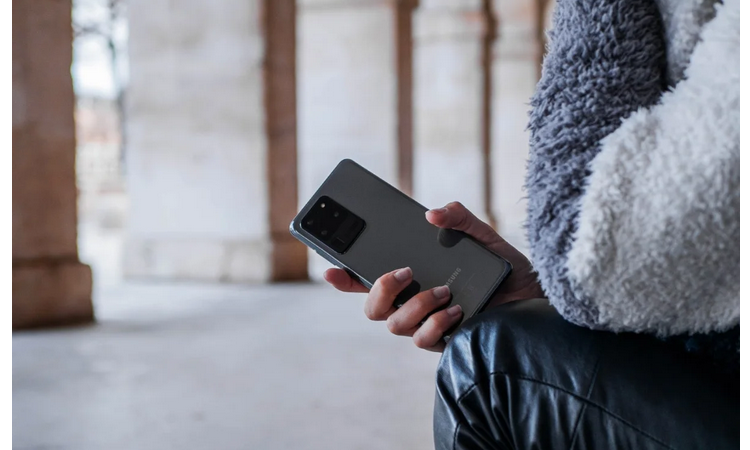
With the Samsung Galaxy S20 Ultra, the firm has spared no expense. The latest flagship phone from South Korea has the bulkiest technical sheet that we have ever seen on a mobile phone to date. A technical sheet in which the numbers seem to be the most important thing.
And although there is a type of figures that do add points to the experience with the device, such as the 120 Hz screen, the 5,000 mAh battery, or the new memory technologies, others, such as the 108-megapixel sensor, the zoom of 100x or 8K video contribute relatively little, despite directly affecting the increase in the price of the device in the same way that the first type does.
Precisely for this reason, recommending the purchase of the S20 Ultra becomes especially difficult when there is the Samsung Galaxy S20 +, a mobile capable of doing 90% of the things that this can do Samsung Galaxy S20 Ultra, 350 euros less.
Price and where to buy the Samsung Galaxy S20 Ultra
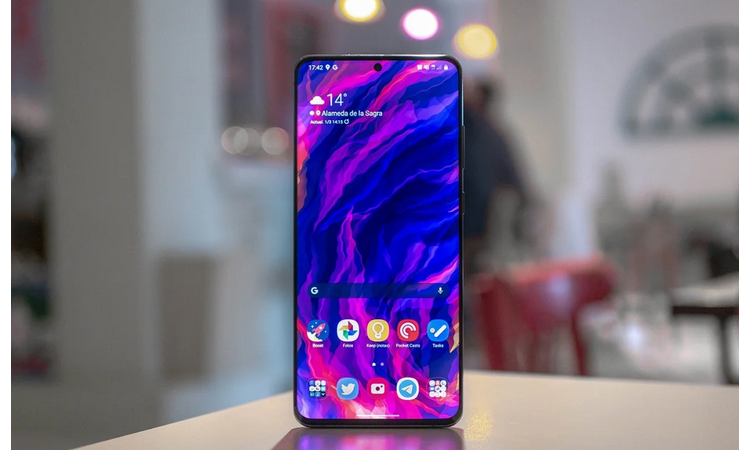
Samsung offers the possibility of buying the Samsung Galaxy S20 Ultra at a base price of 1,359 euros for the model with 12 GB of RAM and 128 GB of storage and storage. One thousand five hundred fifty-nine euros for the most expensive variant with 16 GB of RAM and 512 GB of storage. In addition, the brand offers the possibility of recovering up to 400 euros when delivering an old mobile when buying the new device.
If you prefer, you can buy it through Amazon at a lower price.
| Samsung Galaxy S20 Ultra, opinion and Andro4all note | |
| Should you buy the Samsung Galaxy S20 Ultra? | |
| In favor |
|
| Against |
|
| Conclusions | Numbers aren’t everything, and the Samsung Galaxy S20 Ultra is the best example. With what should have been its best mobile to date, Samsung is so focused on showing how far it can go that it seems to have not stopped to think if it was necessary to do so. |
| Punctuation |
Samsung Galaxy S20 Ultra It is easier to see the defects in such a large mobile. |
This is where our analysis of the Samsung Galaxy S20 Ultra ends. What do you think of the terminal?

Sharlene Meriel is an avid gamer with a knack for technology. He has been writing about the latest technologies for the past 5 years. His contribution in technology journalism has been noteworthy. He is also a day trader with interest in the Forex market.















